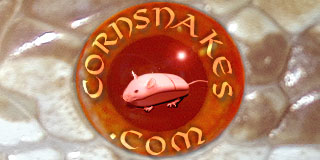GillianC
Herpetologists' offspring
I already posted another thread about the other little guy I picked up at the Hamburg show, so this one is due for some acknowledgement. But I am a bit curious about him as well. Outback has had house snakes for a while, but I don't recall seeing this species, only inornatus, something they have labelled as an olive house snake. I don't remember what this guy was labelled as at the show, but I checked what they had for sale online and all they have listed is red house snakes. The picture looks like him, but I don't know what a red house snake is - I can't find it as a common name for any of the species. What I originally thought was that he was a common brown house snake, Lamprophis fuliginosus, but after further inspection and research I'm now suspecting he might be Lamprophis maculatus, or a dotted house snake. Does anyone have any opinions?



It's not entirely critical that I know what he is...I'm just curious. The pictures don't really show that the pattern on his neck extends down most of the body.
Thanks for looking!



It's not entirely critical that I know what he is...I'm just curious. The pictures don't really show that the pattern on his neck extends down most of the body.
Thanks for looking!
